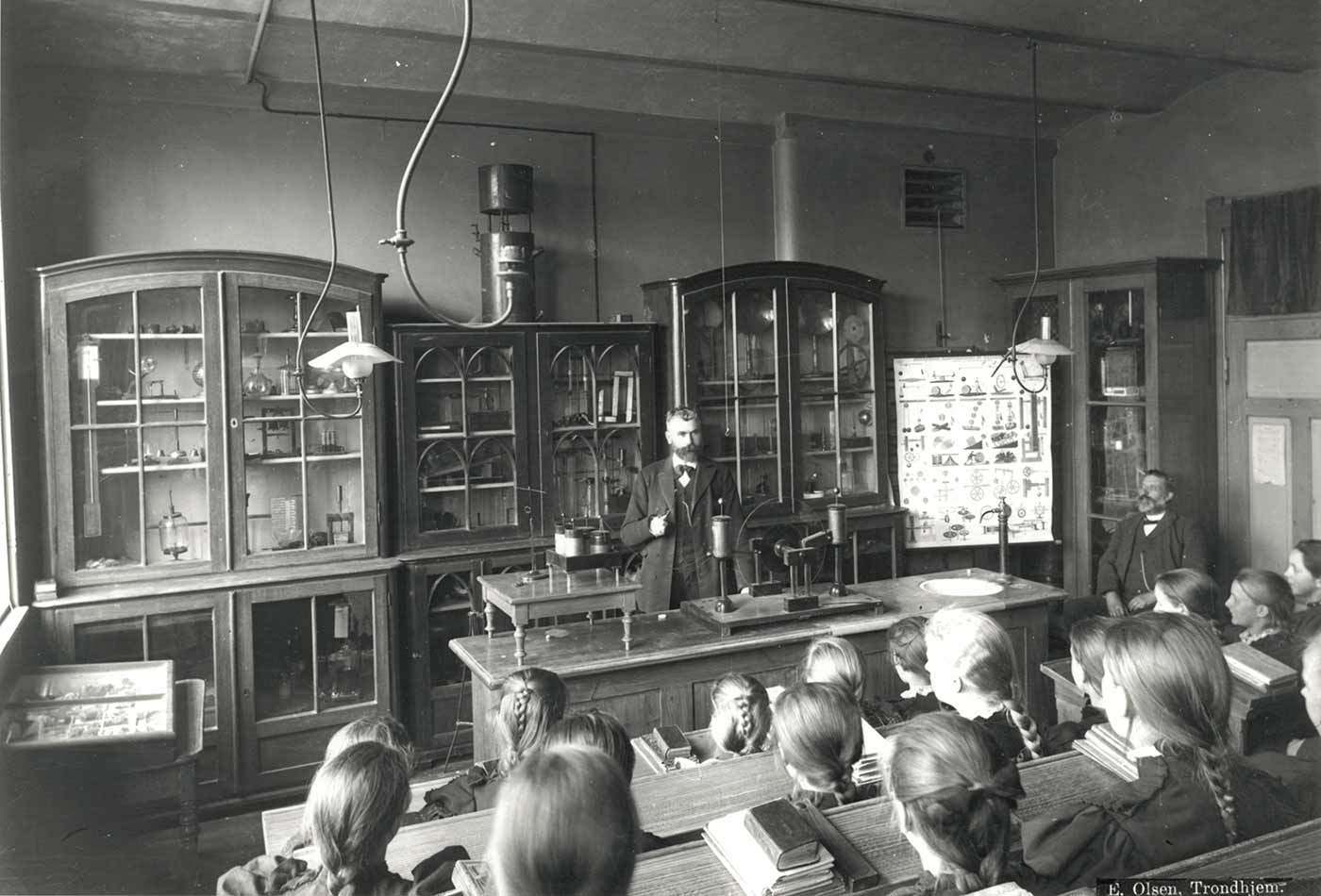It’s time we empower everybody with biotechnology
BioBuilder promises a way forward for biology education.
 Science class at Kalvskindet school (ca. 1900). (source: Municipal Archives of Trondheim on Flickr)
Science class at Kalvskindet school (ca. 1900). (source: Municipal Archives of Trondheim on Flickr)
The public consciousness regards synthetic biology as halfway between magic and science fiction: an esoteric field firmly in the domain of white lab coats and the abstract future. Natalie Kuldell, president at the BioBuilder Educational Foundation, aims to change that—to make synthetic biology and biotechnology as accessible as basic circuitry. To “empower everybody with biotechnology,” she believes, will create an “interested and engaged citizenry” able to address and resolve problems relevant to their lives.
BioBuilder has run for five years as a nonprofit. In those five years, it expanded to place teachers in 40 states, though most teachers are located in New England. About 80% of those teachers are based in high schools; of those, 65-70% are public schools across a range of income levels. By partnering with teachers at the secondary and postsecondary levels, BioBuilder makes synthetic biology education available to students outside what exists in most biology curricula, and beyond the level at which it would normally be taught. The program uses the MIT synthetic biology curriculum, resculpted with the input of high school teachers to make MIT research accessible to students at that level.
While public schools in the U.S. demand basic science education, resources to provide that education are often in short supply. Recent biological advances and the growing importance of biotechnology has left secondary-level biology education far behind. Teachers would like to keep up, but they have a limited ability to include new information in their curricula: “Teachers don’t have a lot of extra time in their year to do more stuff, but they have things that they think they could do better,” says Kuldell. “The notion of bringing engineering as a lens to teach life science seemed like a new way to try things.” BioBuilder aims to close the gap between modern biology and biotechnology and high school curricula by revolutionizing teaching methods, rather than simply adding units to compete with existing material—combining, Kuldell says, “The questions that we’re asking in the field of synthetic biology and the kinds of constraints and needs that they have as teachers to develop a modular curriculum.”
Current high school biology programs focus on fact-learning and repetition. This approach not only fails to provide an accurate experience of the sciences, but frequently fails to engage students. “Experiments” are rote labs with predetermined procedures and results with no room for student input and no relevance to their experiences. Bored and frustrated students graduate feeling disillusioned or actively opposed to the sciences, and even those who are engaged are unprepared for actual academic science work. Kuldell believes that “people are very naturally inquisitive,” and with the curriculum changes promoted by BioBuilder, hopes to help students “reconnect to [a] self-directed motivation for learning.”
BioBuilder promotes a self-directed style of learning, teaching students to develop their own experiments about topics that interest them: a strain of bacteria that detect copper levels in water, or an investigation into a local infestation of stinkbugs, or research and experimentation into medical biotechnology. The “curriculum is modular and malleable by design” to best accommodate student’s interests, Kuldell says. Rather than forcing students into a series of lectures and fact-memorization with the sole goal of test-taking, the BioBuilder curriculum allows students to steer their own learning, fostering engagement and interest in ways that standard curricula fail.
Due to constraints on teachers, some schools have adopted BioBuilder’s program as an extracurricular club rather than incorporating it into their official curriculum. Its success in these settings provides compelling proof of concept, both for its potential as a teaching method and as a program that appeals to and engages students. The next step, Kuldell hopes, is district-level adoption of the program: while teachers are early adopters, approval of superintendents and administrative organizations would ease the transition of incorporating the curriculum at the classroom level. “Teachers are incredible change agents. … I think there’s a lot teachers can do if you empower them,” says Kuldell, but often they aren’t afforded the credit they deserve, or the power to enact that change: “… a lot of teachers are de-professionalized.” Underpaid and overloaded teachers are given strict curricula and performance quotas for their students, leaving them little room for freedom or creativity to engage students.
Biotechnology now stands where computational technology did in the 1980s. Already, synthetic biologists and biotechnicians are revolutionizing fields from medicine to agriculture—not just in well-funded laboratories, but in garages and basements. Biology education needs to catch up, to provide students with biological tools to solve problems, rather than frustrating them with predetermined labs and memorization. Headed by Kuldell, BioBuilder promises a way forward: a new teaching method to relay the necessary biological principles through the lens of engineering and self-driven learning.
